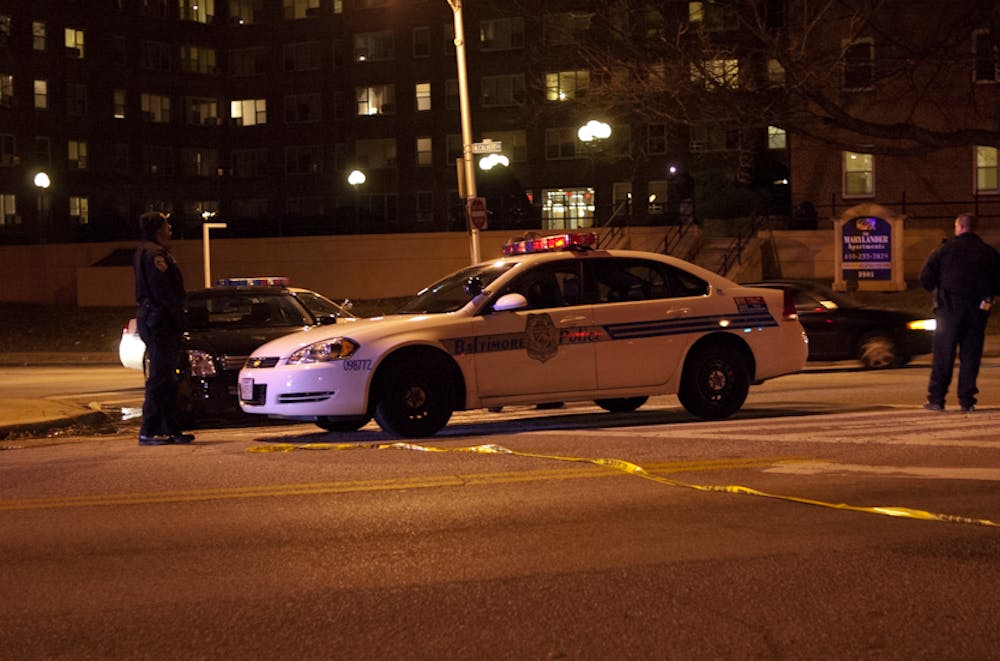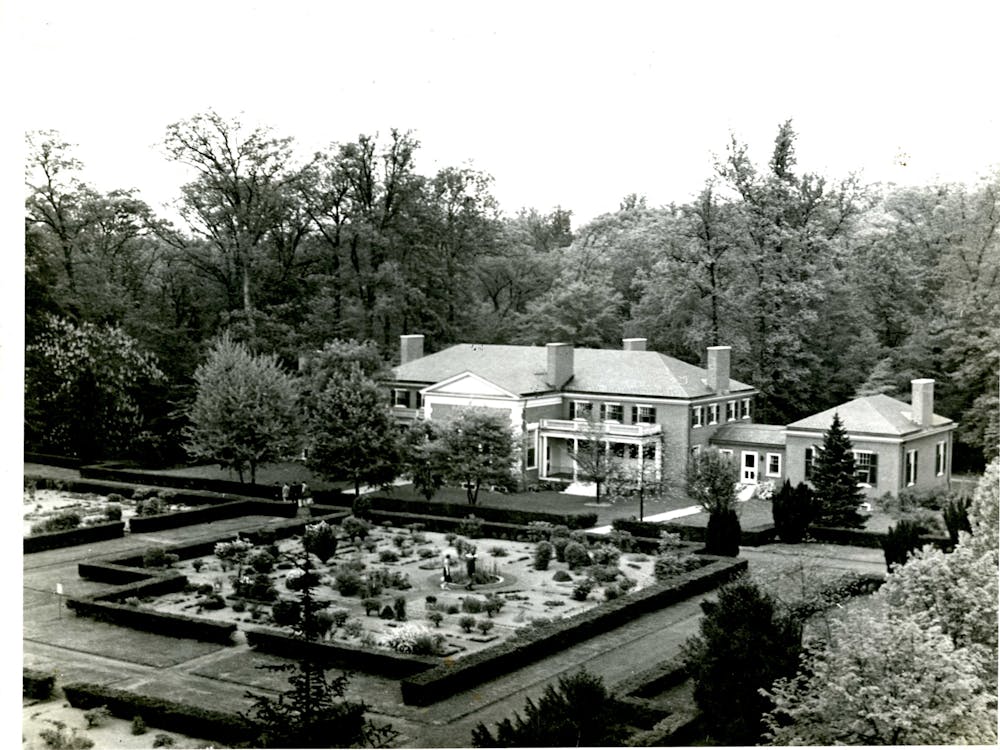In light of the recent increase in armed and unarmed robberies near Homewood campus, the University plans to strengthen its security measures. In an email sent on Oct. 23, University President Ronald J. Daniels emphasized the importance of a “visible security presence” and neighborhood improvement.
Some students are pleased with the University’s efforts to reduce crime, while others question whether these measures will effectively address the root of the problem.
The University is planning to employ more security guards and off-duty police officers, expand the patrol area and improve lighting and security camera coverage. Hopkins will also deploy a special response unit made up of former officers.
Daniels also wrote that the University aims to collaborate more closely with the Baltimore Police Department (BPD) as well as “nurture and invest in neighborhoods” around campus such as Charles Village and Remington.
Director of Media Relations Tracey Reeves elaborated on the University’s efforts to increase campus security.
“We have about 50 percent more foot and car patrols around campus every night than we did a few years ago,” she wrote in an email to The News-Letter.
She added that campus security officers are responsible for observing and reporting suspicious activity, while armed off-duty police officers have the authority to take law enforcement action. Campus Safety and Security (CSS) also collaborates closely with BPD.
“Our investigative team works in tandem with BPD detectives to share criminal intelligence information and to work on strategies to solve crimes affecting our community,” Reeves wrote.
Hopkins crime logs reported 18 robberies and seven assaults since the beginning of this semester. As a result of the spike in crime, many students who live off-campus have felt unsafe and support the University’s efforts to improve security.
Graduate student Kushan Ratnayake said that the increased crime rate will influence his housing situation in the future.
“It has definitely impacted my decision to choose a closer location to campus,” he said. “Even though housing is cheaper further away from campus, I think people are paying for safety by being closer to campus.”
Senior Brice Messenger said that he is satisfied with the efforts of CSS in the area near his building and that he rarely feels unsafe.
“I do feel a little less safe going towards Guilford Avenue away from campus,” he said. “But in terms of where I live, I live on North Charles a block away from Homewood, so I still feel like that’s a very safe area.”
Junior Harrison Folk, who lives on the corner of 31st and N. Calvert Street, feels that security has been inadequate in the past.
“The main presence of campus security was previously on Charles Street and the corner of St Paul and 33rd, where it is not needed,” he wrote in an email to The News-Letter. “A good portion of students either live off campus and must walk home at night or visit those who do live off campus, so it would make sense to protect these areas.”
Folk believes it is a good idea to have armed officers patrolling neighborhoods surrounding campus.
“I do believe that initially having armed officers around campus is a good thing,” he wrote. “The University needs to make it known to these criminals that it is not messing around and is finally ready to protect its students.”
He elaborated that people are deterred from engaging in criminal activity in areas where there is increased security presence.
“The main way to prevent crime from occurring is to have a visible presence in these areas, particularly on Calvert and Guilford,” he wrote. “Criminals do not care if there are vehicle patrols, as most areas along these streets are protected by trees or darkness.”
Reeves said that CSS provides a number of services to educate students on how to stay safe, including security trainings, Neighborhood Safety Walks and the LiveSafe app, which allows students to report criminal activity via text message.
CSS also recently launched the Digital Safety Campaign, a social media crime prevention effort. Reeves discussed the goals of this campaign.
“We began broadcasting mini crime-prevention videos, posts and graphics at the beginning of the fall semester to inform our community about safety,” she wrote.
Ratnayake believes that by investing in nearby neighborhoods, Hopkins is not doing enough to address the systemic concerns of crime.
He elaborated that the “mixed-income” neighborhoods which Daniels mentioned in his email, such as those near 9 East 33rd and R. House, are not the areas most in need of investment.
“I feel that the crime is coming more from less developed areas that Hopkins hasn’t really been investing in, and it’s starting to encroach on the Homewood area,” Ratnayake said.
He believes that as the largest employer in the state of Maryland, it is the University’s duty to ensure the safety of its affiliates.
“Hopkins has a responsibility to protect the student body and [address] the systemic concerns that the crime originates from. It has to go beyond beefing up security and camera surveillance.”
He also said that the University should expand its Live Near Your Work program, which provides housing benefits to Hopkins faculty.
“Right now it’s only being offered to Hopkins employees and not subcontracted workers,” he said. “I’d like them to extend those benefits and in general to... invest in areas outside of the Hopkins bubble as well.”
Folk, however, supports the University’s initiative to invest in surrounding areas and believes that it will benefit community members.
“If anything, the Baltimore residents who are not affiliated with Hopkins should welcome the additional security of the area. The security does not cost them a penny more,” he wrote.
Although President of the Charles Village Civic Association (CVCA) Kirsch Jones agrees that much of the crime originates from areas beyond Charles Village, he supports many of the University’s initiatives to improve the neighborhood.
“This highly inclusive approach continues to make life better for many in the area, as it simultaneously addresses key causes of crime and neighborhood instability,” he wrote in an email to The News-Letter. “Given their proven impact, community outreach and investment should continue.”
Jones listed specific benefits such as fewer vacant buildings, better housing, new businesses and job opportunities.
However, Jones also noted that these initiatives would have to extend beyond Charles Village to have an impact.
“Many of the people who are committing crimes don’t live in Charles Village,” he wrote. “Broad outreach is going to be a key element in improving situations so that people don’t choose to engage in crime. The outreach that’s already been done as part of JHU’s activities has helped, but we’re looking at how this can continue.”
Jones mentioned a number of practices that Charles Village residents have implemented to improve community safety.
“Community groups are working to raise awareness and to encourage preventive measures,” he said. “Residents gather for evening safety walks each week. Some neighbors are doing more to look out for each other, brushing up on best street safety practices and investing in improved locks, lighting, cameras and alarms.”
Reeves said that residents in surrounding areas are aware of the increased efforts of CSS.
“The Charles Village community recognizes and supports our mobile patrols, which supplement crime prevention in their neighborhoods, and our Neighborhood Safety Walk Programing in the fall,” she wrote. “It is not unusual for residents to come out and thank our patrol officers or greet students who participate in the Neighborhood Walks.”
She elaborated that the University is collaborating with the Charles Village community in a variety of ways as it implements these new security measures.
“Campus Safety and Security and Johns Hopkins’ Office of Community Affairs work closely with local neighborhood groups... attending community meetings, participating in community events to show our continued support, and maintaining productive partnerships,” she wrote.
According to Jones, the CVCA and the Charles Village Community Benefits District, another community organization, are both working with campus security to provide support and disseminate crime information. He said that it is important to raise awareness about the issue and collect feedback from residents.
“I want people to understand yes, we’re having a problem,” he said. “But it’s being approached and it is something that we can get past.”























Please note All comments are eligible for publication in The News-Letter.